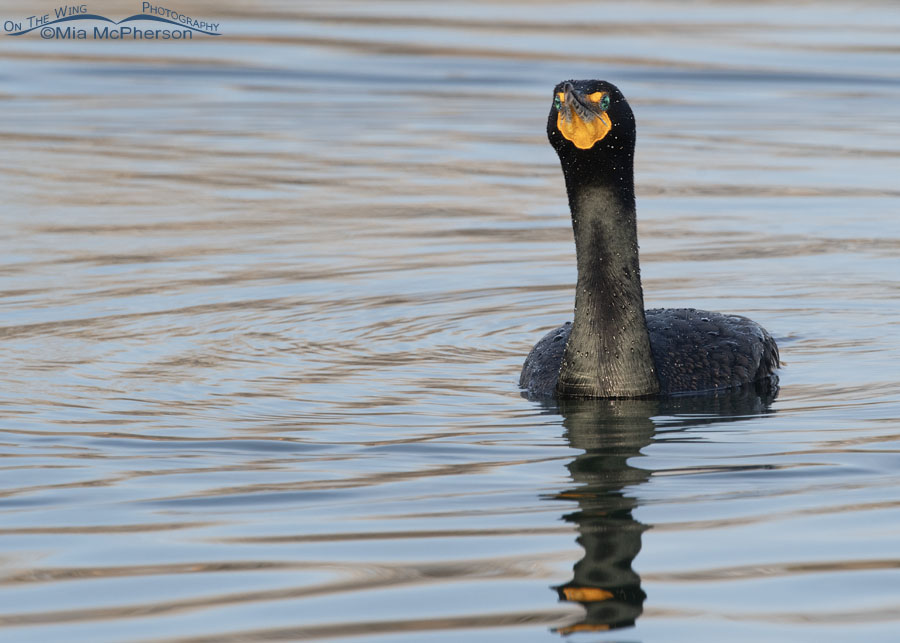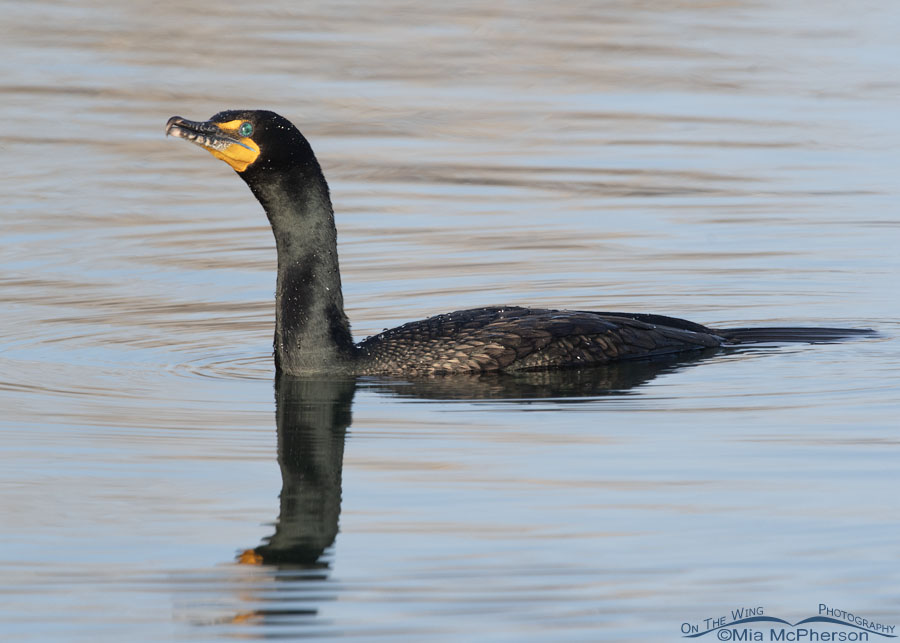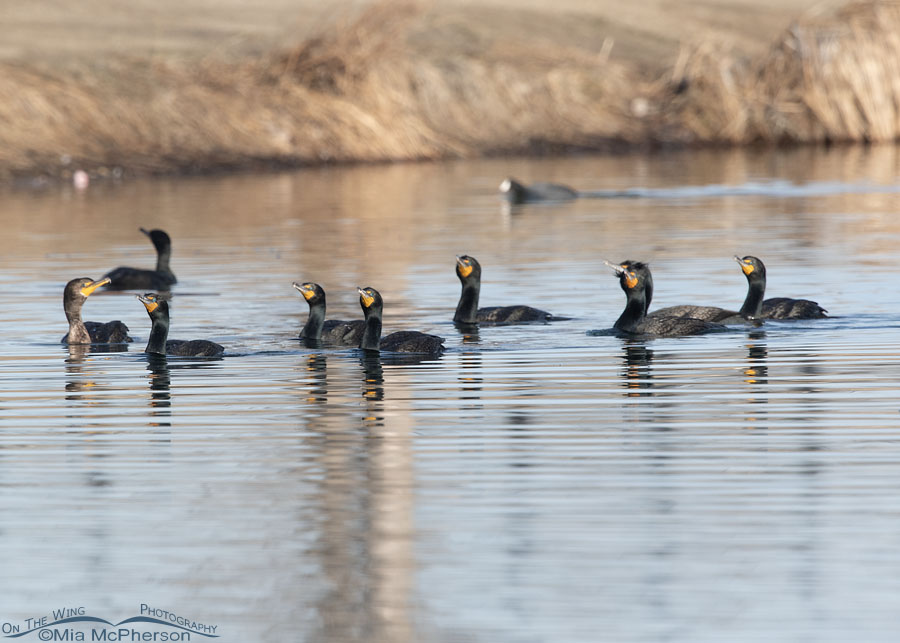While looking at my Common Loon photos from last spring, I came across these Double-crested Cormorant photos that I took at the same time last year. Today, I wanted to share a few.
 Spring Double-crested Cormorant checking me out – Nikon D500, tripod mounted, f11, 1/400, ISO 500, +0.7 EV, Nikkor 500mm VR with 1.4x TC, natural light
Spring Double-crested Cormorant checking me out – Nikon D500, tripod mounted, f11, 1/400, ISO 500, +0.7 EV, Nikkor 500mm VR with 1.4x TC, natural light
I was so excited about the loons that I didn’t get these Double-crested Cormorant images edited or shared last spring. Today is as good a day as any to do that. Why not?
I liked this cormorant image because I can see the gorgeous color of the bird’s eyes and the tiny water droplets on its head and face. The wiggly reflection of the cormorant also caught my eye.
 Urban Double-crested Cormorant in spring – Nikon D500, tripod mounted, f11, 1/400, ISO 500, +0.7 EV, Nikkor 500mm VR with 1.4x TC, natural light
Urban Double-crested Cormorant in spring – Nikon D500, tripod mounted, f11, 1/400, ISO 500, +0.7 EV, Nikkor 500mm VR with 1.4x TC, natural light
Seeing the cormorant checking me out as it swam by was fun. Typically, they dive to swim away when they have gotten this close to me. I was happy this one allowed me to take a few images before diving under the water.
 Urban Double-crested Cormorant flock – Nikon D500, tripod mounted, f7.1, 1/1250, ISO 500, +0.7 EV, Nikkor 500mm VR with 1.4x TC, natural light
Urban Double-crested Cormorant flock – Nikon D500, tripod mounted, f7.1, 1/1250, ISO 500, +0.7 EV, Nikkor 500mm VR with 1.4x TC, natural light
There were more than two dozen Double-crested Cormorants on that local pond one year ago today. This photo shows just nine of them, including one that hatched the year before last. It is the cormorant on the far left. You’ll notice that its head and neck are lighter in color than the other cormorants.
Some people can’t stand cormorants. Me? I appreciate them and feel like they get maligned too easily by fishermen and the fishing industry. That? Is sad.
Life is good.
Mia
Click here to see more of my Double-crested Cormorant photos plus facts and information about this species.





Beautiful birds. As so many are. And re Marty’s comment I wonder whether they prefer to be down wind of us. I wouldn’t be surprised.
I prefer to not be downwind of them (they’re a little odoriferous), but even that can be overlooked to watch them do their thing!